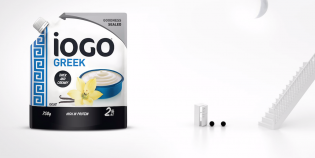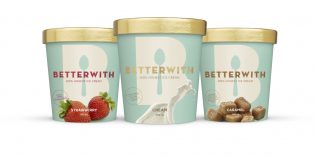 |
|
Photo: Jeff Kirk |
During a break in the Marketing Hall of Legends ceremony, Taxi’s chief creative officer Steve Mykolyn is trying desperately to get his boss, Paul Lavoie, across the packed room to meet a client. It ain’t gonna happen. Lavoie, tall, bald and baritoned, can be spotted or heard in any crowd. And being a founder of one of Canada’s most successful ad agencies, he is in demand.
Mykolyn has nearly reached his target, but is blocked momentarily when I say a quick hello. Mykolyn smiles, shakes hands, and pleads his case to get Lavoie out of reach of the crowd swarming in his wake. Before I can make way, however, Lavoie stops and shakes my hand.
“Hey, I want to ask you: how much do you think you pay for the CBC?”
I don’t know, but he waits for me to mull it over as Mykolyn frets and the crowd closes in. “Not much. In the hundreds?”
“Thirty dollars,” comes his answer. “I want to talk to you about this.”
By now the swarm has overtaken us, and people are grabbing Lavoie to say hello and introduce him to friends and colleagues. There’s no way Mykolyn’s going to make it to his client before the break ends, but he’s probably used to that.
Lavoie’s brand precedes him—innovator, entrepreneur, breeder of talent and national pride. He was central in getting Canadians interested in Cannes, and he’s again calling on national pride for a project that transcends the industry. He thinks Canada needs rebranding, and is taking that message to every event he attends.
What, exactly, is wrong with Brand Canada?
“We have not managed our brand carefully, or with a shared purpose,” Lavoie told attendees at Marketing Week last November. “We’ve allowed our diversity to define us in broken fragments according to short-term tactics, not long-term goals.”
I asked Lavoie to explain this when we met recently at Taxi’s Toronto office. “There’s product and then there’s brand,” he said. “Our product is beautiful, but our brand impression is uneventful, quiet and ill-defined.” While we have rich resources, like lumber, water and oil, other countries have a reputation associated with them; Sweden has Ikea, Japan has Toyota and France has Perrier. Lavoie is now asking, “Where is the Canadian car? Where is Canadian food?” In effect, why is Canada “invisible?”
“I challenge anyone who reads your magazine to tell me that’s how they’d manage their own brand.”
The stakes are huge, according to those who believe in nation branding. In his book Competitive Identity, Simon Anholt says a country’s brand is important to win a share of the world’s “consumers, tourists, investors, students, entrepreneurs, international sporting and cultural events, and for the attention and respect of the international media, of other governments, and the people of other countries.
“In such a busy and crowded marketplace, most of those people and organizations don’t have time to learn about what other places are really like,” he writes. Even if someone has never visited Paris or Tokyo, they probably understand that “Paris is about style, Japan about technology.”
Alan Middleton, executive director of the Schulich Executive Education Centre at York University and co-author of Ikonica: A Field Guide To Canada’s Brandscape, calls place branding “the hottest topic in branding,” and says millions are being spent to give cities, regions and countries distinct identities. He is currently working with Invest Toronto to brand Ontario’s capital as a city worthy of foreign investment, and knows first hand what can happen when a country’s competitive identity is left to chance. During a meeting with the head of Japan’s largest department store chain, Middleton said, “someone asked him ‘What would you like to buy from Canada?’ He looked embarrassed and said ‘Quite frankly, I can’t think of anything.’ ”
Middleton agrees with Lavoie’s characterization of Canada as “invisible,” and worked with him in 2004 to convince the federal government to deal with the problem. His story of their efforts shows Ottawa has a lot to learn about branding.
After consulting with Middleton and several of his colleagues at Schulich, and with global research in hand, Lavoie met with the Ministry of Trade and Industry. He presented a brand position intended to keep the country competitive in the future.
“We recommended sustainability as an interesting area,” Middleton says. “When people think of Canada, they think of open spaces, nice countryside and clean water. We know it’s not entirely true, but we can use it.” Lavoie suggested Canada could lead the world in clean water, “the technology of the next generation,” by showing how the country could shift its policies, taxes and social investments.
“The government people said, ‘This sounds interesting. We might hand it over to our tourism advertising people.’ They didn’t understand that’s not what a brand is.” That project was dropped for lack of interest, but Lavoie didn’t let it die entirely.
“I’ve travelled around the world a lot,” he says. “The more you travel the more you see we’ve won the lottery being born in this time and in this country. When you receive something like that, you have to give back. We have to keep this project called Canada going.”
The latest iteration of his passion is Outing Canada—a plan to create a single, aspirational brand position that starts with current preconceptions about Canada (big, natural, clean and nice), but is forward-looking to anticipate global needs. It would also have to be relevant to all Canadians, regardless of ethnicity, income or home town, and be backed by government and corporate policies, educational programs and the population at large.
Lavoie’s suggested position, Outside Thinkers (see sidebar), would create several private- and public-sector projects—most of which would promote the idea that Canada is a country of green innovation. Canadians would produce electric bikes, build environmentally sound housing, and tell their stories through a more robust CBC (which should get more tax funding, Lavoie says, hence the quiz at the Hall of Legends gala). It’s a grand, ambitious plan requiring buy-in from business, education and political communities.
“I would like to get the Prime Minister to realize that this is an important activity,” Lavoie says. “I can’t fight the government. I’ll criticize them, because they’re terrible brand managers, but one of the things they can do well is facilitate. They should play that role.”
Not everyone thinks such a plan is necessary, or even helpful. “I think he’s bang on in terms of Canada’s need for a definitive brand,” says Greg Klassen, senior vice-president, marketing for the Canadian Tourism Commission. “I love that he’s starting the conversation,” but as far as tourism goes, Canada’s brand is already strong.
If it is so poor, Klassen argues, why did Lonely Planet name Canada one of its top 10 destinations for 2009? Likewise, why did FutureBrand’s 2008 Country Brand Index rank Canada the second best nation brand in the world, behind Australia and ahead of the U.S., calling it “an exceptional country [that] has all of the assets to be a great brand?” Even Simon Anholt’s study, the Anholt-GfK Roper Nation Brands Index, ranked Canada fourth of 50 ranked countries in 2008.
Lavoie’s response to the Anholt and FutureBrand surveys is, well, they’re surveys—when you ask people to think about Canada they’ll say nice things, but if we don’t ask, no one thinks about us at all. Also, Lavoie’s outlook is decidedly focused on business, not tourism.
“Why does no one in the world know that Bombardier or Cirque du Soleil are Canadian? They ask questions about what people think about Canada, and they always default to ‘Beautiful place. Countryside. Snow. Cold.’ We know these things, but we’re not very competitive.”
But there is also resistance to some of Lavoie’s ideas within the ad industry. Tony Chapman, CEO of Toronto agency Capital C, agrees Canada’s brand is undistinguished, saying it’s like “white bread, it has no vision or purpose attached to it.” Chapman is also concerned with Canada’s place in the new global economy, promoting his own message of Canadian innovation to the industry. He, like Lavoie, bemoans the government’s lack of understanding when it comes to nation branding and, based on where the last federal budget directed tax dollars, says Ottawa is jeopardizing our nation’s future.
“Are we going to slip back into being hewers of wood and pumpers of oil, or are we going to be an economy that leverages our multiculturalism, our freedom, our access to the U.S. market, our educated workforce? What are we going to lead the world in?”
However, despite sharing Lavoie’s concerns, Chapman thinks a branding campaign alone is “a band-aid on a festering sore.
“If the target [of Outside Thinkers] is to have companies and people consider Canada a place to invest their capital or their life, I think the problem is far more serious than any branding campaign can solve… We don’t need a red ribbon that attempts to differentiate us. We need a [political] vision for Canada that clearly articulates the type of country we want to be [in terms of] the near-future economy, social programs, environment, foreign policy, and the strategies and tactics required to realize this vision.”
In short: what good is there in promoting Canada when Canada is on the brink of being irrelevant in terms of industry and innovation? Better to invest in new industries and make sure we can back up our claims before making any in the first place.
Ironically, both Chapman and Lavoie make their cases with statistics from the Conference Board of Canada that show Canada’s productivity—measured by indicators such as R&D investment, university funding and patent applications—has been declining since 2000. Where Chapman sees a need to invest in new and more relevant businesses, Lavoie sees a need to galvanize what currently exists to present a united front to the world, with projects that allow current industries to take part in a national facelift. Once people think of Canada more positively (and more often), the investment will follow.
Now that his ideas have been made public, Lavoie is looking for allies. He’s approached the ICA, met with Heather Munroe-Blum, principal at McGill University, and wants to meet with Prime Minister Stephen Harper and Governor General Michaëlle Jean.
“I don’t have all the answers. I have an idea and I’ve put some thinking around it, but this is something that can have a huge impact on our industry.” Though Lavoie himself has already made a huge impact on Canadian marketing, he seems sincere when talking about making this a nation-wide initiative. Regardless of whether Taxi leads the charge or not, he wants the conversation to start now, while Canada still has a chance at becoming relevant.
OUTSIDE THINKERS
As part of his plan to re-brand Canada, Taxi founder Paul Lavoie has suggested a handful of projects meant to promote the idea that Canadians are green innovators serving as stewards of the world’s finest resources. Lavoie’s Outside Thinkers platform (outsidethinkers.com) could offer a bevy of products and services that may lead to work for creative shops, public relations agencies and retail designers. If they take off, they may even buoy a few Canadian industries.
Maison Canada
“We are experts in insulation. We have great architects. We have the source material. We are a leading window manufacturer,” says Lavoie. So why aren’t we collaborating on making the ultimate prefab houses? They could be made fuel- and energy-efficient, making them an easy PR sell and cheaper for homeowners.
The Made in Canada effect
Why sell steel and water when we can sell “Made in Canada” steel and water? Canada fuels a few international brands with its natural resources, but doesn’t get any credit for their quality. “By treating our natural resources like commodities, we are selling them short when we should be selling them at a premium and getting all the recognition that comes with it.”
The ultimate electric bicycle
“Take the ingredients of engineering and design and combine them with proper marketing, a global need, and we have the opportunity to build a great Canadian electric bike,” says Lavoie. Taxi wants to partner with Magna Corporation to get more cars off the road and provide easier commutes for cycling enthusiasts living in hilly cities.
The Canada Store
Lavoie wants Canada’s consulates to become destinations of their own, using Apple Stores as an example of retail branding taken to its pinnacle. “Let’s get someone like Frank Gehry to build it. Adding retail or a restaurant would provide a Canadian showcase to the world. We could tell the world all of our great success stories like BlackBerry and Cirque du Soleil—just two of many brands the world does not recognize as Canadian.”
Invade a foreign country
We’re peacekeepers, right? Let’s defy expectations. Let’s “attack” a country in need with our technology and expertise to improve its roads, communications, health care and school systems, suggests Lavoie. Then let’s leave and let them “define their own future.”
Originally Lavoie saw Africa as the target continent for such a project. Now he thinks Haiti may be a better fit, and wants to meet with Haitian-born Governor General Michaëlle Jean to make it happen.










